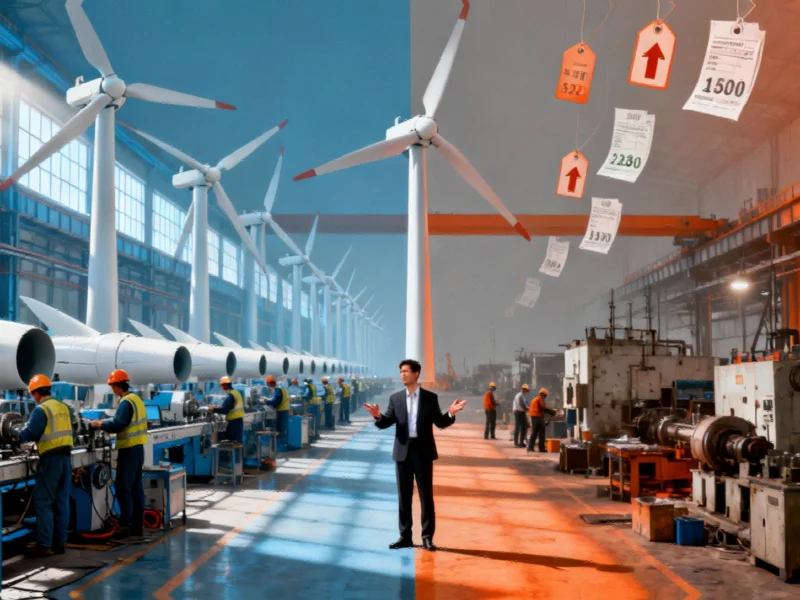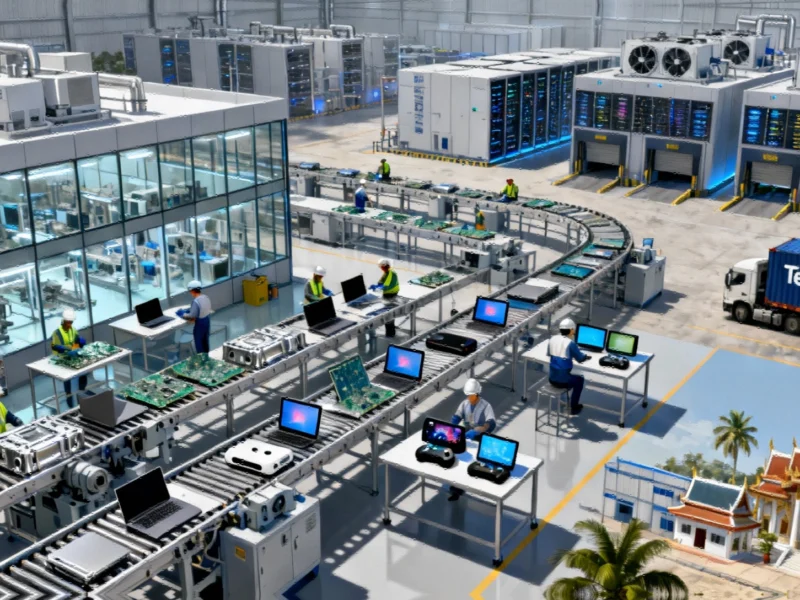Western nations pursuing energy independence through domestic renewable manufacturing may face significantly higher electricity costs by excluding competitively priced Chinese wind technology, according to a senior executive from one of China’s leading turbine manufacturers. The warning comes as countries worldwide grapple with balancing decarbonization goals against growing national security concerns about technological dependence on China.
Kai Wu, vice-president of Goldwind who leads the company’s international division, told the Financial Times that China’s cost advantage in turbine manufacturing has grown “huge” – approximately “40 per cent, at least” compared with western competitors. This price differential directly impacts consumer electricity bills, as installation costs are typically passed through to end users. The Chinese wind turbine executive’s comments highlight the complex trade-offs facing Western energy policymakers as they attempt to build local supply chains while maintaining affordable clean energy transitions.
“I always ask them: are you ready to sacrifice the cost of energy?” Wu stated, acknowledging that while foreign governments understandably want to deepen local supply chains and create employment, this comes with financial consequences. “Everybody wants to have the best salary and the lowest workload, but it’s not reality,” he added, pointing to fundamental economic differences between manufacturing environments.
Global Supply Chain Tensions Intensify
The renewable energy sector has become the latest flashpoint in escalating trade tensions between China and Western economies. Last year, the European Union launched a subsidy investigation into Chinese wind turbine companies, while simultaneously planning measures to restrict Chinese operators’ participation in public tenders and renewable subsidy auctions. The United Kingdom has similarly been reviewing security implications of Chinese-manufactured technology across its energy infrastructure.
These developments reflect broader patterns of technology security concerns affecting multiple industrial sectors worldwide, as nations reassess their critical infrastructure dependencies. Western officials have been increasingly vocal about Beijing’s industrial policies, which they claim have created overcapacity and enabled below-cost product pricing that distorts global markets.
China’s Manufacturing Dominance and Cost Advantages
According to International Energy Agency data, China’s clean energy investment reached more than $625 billion last year, nearly doubling since 2015. Chinese companies now produce more than 80% of the world’s wind turbines, solar panels, and energy storage batteries – a dominance fueled by state support, intense local competition, and continuous technological breakthroughs that have driven dramatic cost reductions.
Wu highlighted significant labor cost disparities, noting that while some Western engineering graduates command salaries approaching $140,000, he could hire “at least three” comparable professionals for the same amount in China. This cost structure advantage extends beyond labor to comprehensive manufacturing ecosystems that have developed around renewable technologies.
The situation mirrors supply chain pressures affecting other critical industries where production concentration creates pricing vulnerabilities, though with different dynamics specific to high-tech manufacturing.
Technological Leapfrogging and Development Timelines
Wu argued that China’s advantage in renewables partially stems from its relatively late development in the sector, which provided opportunities to leapfrog older technologies. “We cannot say China is good and Europe is bad, or Europe is good, and China is bad. We have to see the ‘time’ difference,” he explained, emphasizing the importance of historical context in understanding current competitive positions.
According to Wood Mackenzie forecasts, Chinese wind turbine manufacturers are positioned to dominate the global industry over the next decade, driven by strong domestic growth and aggressive overseas expansion plans. The consultancy projects Chinese companies will capture approximately 27% of installed capacity outside China, primarily in emerging markets, while European and American manufacturers like Vestas, Siemens Gamesa, and Nordex are expected to maintain dominance in their home markets.
Industry Evolution and Technical Challenges
Within China, Goldwind and competitors are increasingly focusing on offshore wind power installations, which present greater technical challenges and higher costs but offer significantly more power generation potential. This shift toward more complex projects demonstrates the industry’s technological maturation and parallels broader patterns of technological advancement across multiple industrial sectors where companies continuously push performance boundaries.
Speaking at a recent Beijing forum with climate-vulnerable countries, Wu identified financing as “a real problem” for wind power development. He noted that while turbine manufacturers constantly improve and innovate, supporting infrastructure costs – including road transport and construction expenses – must also decrease for renewable energy to achieve its full potential. “If many of these costs don’t come down, technological innovation alone cannot solve the problem,” he emphasized.
Collaboration Versus Competition
Despite the competitive tensions, Wu called for enhanced international collaboration within the wind industry, stressing that Chinese companies have much to learn from European counterparts, particularly regarding sophisticated financing mechanisms and technical standards for wind development. This acknowledgment of mutual learning opportunities suggests potential pathways for constructive engagement even amid current trade frictions.
The executive’s comments highlight the fundamental dilemma facing Western energy transition strategies: whether to prioritize supply chain security and domestic job creation at potentially higher energy costs, or embrace globalized manufacturing efficiencies that may create strategic dependencies. As nations work to meet climate commitments while managing economic and security concerns, these trade-offs will likely define the pace and affordability of the global clean energy transition.
Based on reporting by {‘uri’: ‘ft.com’, ‘dataType’: ‘news’, ‘title’: ‘Financial Times News’, ‘description’: ‘The best of FT journalism, including breaking news and insight.’, ‘location’: {‘type’: ‘place’, ‘geoNamesId’: ‘2643743’, ‘label’: {‘eng’: ‘London’}, ‘population’: 7556900, ‘lat’: 51.50853, ‘long’: -0.12574, ‘country’: {‘type’: ‘country’, ‘geoNamesId’: ‘2635167’, ‘label’: {‘eng’: ‘United Kingdom’}, ‘population’: 62348447, ‘lat’: 54.75844, ‘long’: -2.69531, ‘area’: 244820, ‘continent’: ‘Europe’}}, ‘locationValidated’: True, ‘ranking’: {‘importanceRank’: 50000, ‘alexaGlobalRank’: 1671, ‘alexaCountryRank’: 1139}}. This article aggregates information from publicly available sources. All trademarks and copyrights belong to their respective owners.



